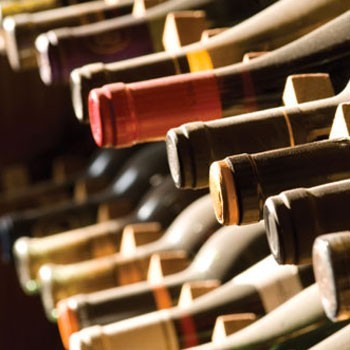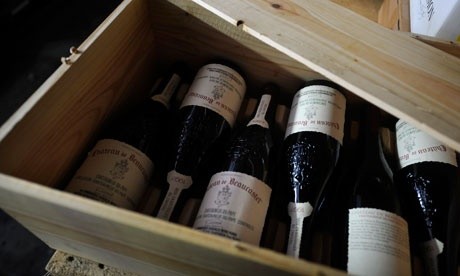Fine wine prices plunge; invest or drink
Post on: 24 Май, 2015 No Comment

Bottles of wine, one costing nearly $460, are shown in a wine shop in San Francisco, California January 14, 2008.
Analysis & Opinion
n>(Reuters) — If the secret to investing is buy low and sell high, the steep drop in fine wine prices — down between 25 percent and 40 percent from a year ago — could be an opportunity to diversify a portfolio — or not.
I think there’s plenty of air left in this bubble. There’s more of this drop to come, economist and author Robin Goldstein said on the sidelines of the American Association of Wine Economists’ (AAWE) annual conference at Princeton University last week.
Some investors are hoping alternative assets like fine wines will net them better returns than those found in the stock and bond markets these days. Studies show that few wines will indeed outperform the S&P 500 over the long term, but the asset class also has great volatility.
Experts and academic studies recommend investors approach fine wine as they would gold, though wine is much harder to buy and sell. They suggest it make up no more than 5 percent or 10 percent of a portfolio.
There are at least two other requirements to consider: the minimum investment should be at least three cases worth (roughly $30,000 for an investment grade Bordeaux) if taking possession of the wines and a very long-term time horizon.
Minimum investments at wine funds — financial companies that act as asset managers and mutual funds that buy cases without any intention of drinking them — range from a low of 10,000 pounds ($15,525) to 100,000 euros ($126,400).
Prices for fine wines sky-rocketed during 2009 and 2010, but seem to have peaked about a year ago, according to the Liv-ex 100, an industry benchmark, or composite price index.
For example, a case of the legendary 1982 vintage Bordeaux from Chateau Lafite Rothschild, which auction house Acker Merrall & Condit sold in May 2011 for about $64,000, could be had for a mere $39,900 at its sale last month — a 39 percent drop.
Also at this year’s en primeur, the Bordeaux futures market that runs from April to June each year, prices are down an average of 40 percent from their 2010 highs.
When it comes to collecting wines for investment — as opposed to drinking at some happy occasion, you’re really only talking about the top growths from Bordeaux, said William Grey, the investment manager for The Wine Investment Fund, a limited partnership based in the United Kingdom.
Grey buys bottles of Bordeaux that are never drunk, but instead remain in bonded warehouses to avoid the duties and taxes that can add at least 20 percent to the cost of the wine.

The fund, which is also registered as a mutual fund in the Bahamas, concentrates on collecting bottled wines that are between five and 20 years old; wines that are either ready to drink or nearly so.
That’s when the prices (on bottles) go up. The wines are being drunk, so supply is down, said Grey.
The fund’s returns, directly linked to the prices of fine wines, are also down this year.
Look, we’ve gone through a correction. The market is down 20-25 percent, which means we think it’s a very good time for people to invest, he said.
But Grey notes that wine investments should be a way to diversify one’s risk and make up no more than 5 to 10 percent of a portfolio. His fund requires a minimum investment of 10,000 pounds, or $15,525.
The market for such top wines is very narrow and in the vogue. So it may be subject to strong speculative movements, Francis DeClerck, a professor of finance at ESSEC business school in Paris, noted in a paper presented at the AAWE conference.
Christian Moueix, co-owner of Chateau Petrus — a case of Petrus sold at auction for $62,200 in November — told Reuters on a recent trip to New York that wine is for drinking.
The idea of collecting and speculating is insane in some way. As my father used to say, ‘Another vintage is coming next year.’














